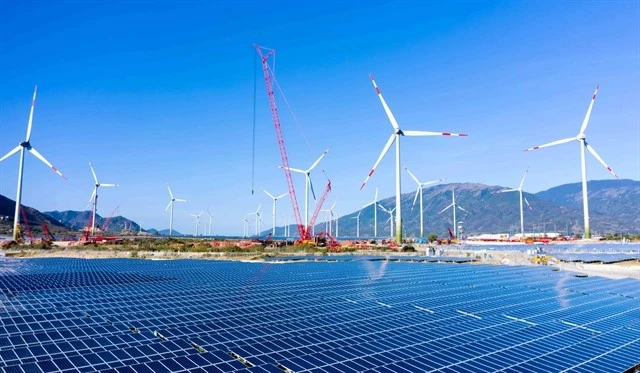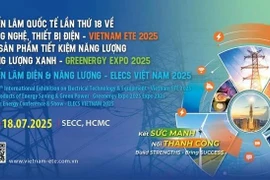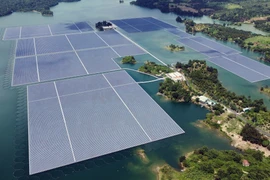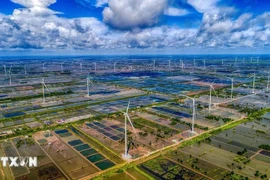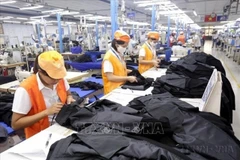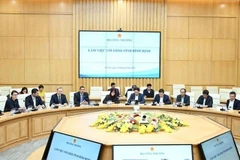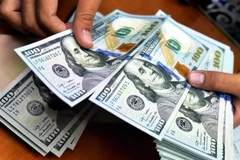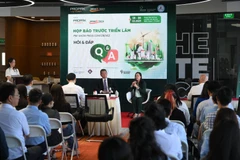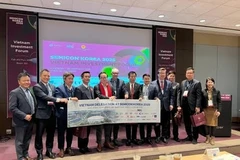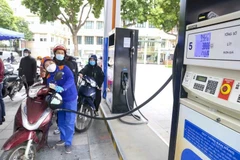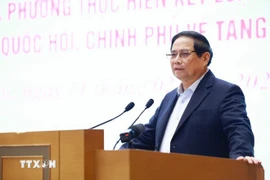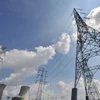Hanoi (VNS/VNA) - Affordable and competitive electricity rates play a vital role in ensuring consistent revenue streams for private enterprises, encouraging their participation in Vietnam's domestic energy market.
At a workshop on boosting private sector participation in the country’s energy sector held on February 18, Dr Nguyen Ngoc Thuy, National Coordinator for the Southeast Asia Energy Transition Partnership (ETP) under the United Nations Office for Project Services (UNOPS), highlighted the need for substantial annual investments in clean energy.
According to Dr Thuy, to meet the growing global energy demand, while still achieving the goals outlined in the Paris Agreement, investment in clean energy for emerging and developing economies must increase threefold from 770 billion USD in 2022 to an estimated 2.2-2.8 trillion USD annually by 2030.
He pointed out the significant disparity between developed and developing economies regarding energy sector investments. In developing countries, state-owned enterprises and the government contribute 50% of investments, while this figure drops to only 15% in developed nations.
Energy projects require significant capital investments and typically have long payback periods. These projects are highly sensitive to financial variables such as foreign exchange and interest rates and policy or regulatory changes. Therefore, effective collaboration between all stakeholders is crucial to mitigate financial risks and ensure project success.
In Vietnam, opening the door to private sector participation in energy projects is seen as a way to boost production efficiency, promote sustainability, strengthen national energy security, and support overall economic development.
Deputy Director of the Department of Industrial and Service Economics under the Ministry of Planning and Investment (MPI) Pham Minh Hung emphasised the importance of existing mechanisms and policies aimed at fostering private investment in the energy sector. These include Resolution 55-NQ/TW, which outlines Vietnam's national energy development strategy through 2045, the Electricity Law of 2024, and the Power Plan VIII.
Hung revealed that by the end of 2024, Vietnam’s total power capacity is expected to reach 82,400 MW, with the private sector contributing more than 50%. The increasing share of private investment reflects the success of policies like the Electricity Law and other investment attraction efforts.
He reiterated that ensuring reasonable electricity prices that reflect production and business costs is critical for attracting private investment into the energy sector.
He also recommended that the private sector be allowed to determine electricity purchase and sale prices, provided they remain within the framework set by the government.
Transparency, fairness and non-discrimination among electricity enterprises are vital elements for fostering investor confidence.
In addition to fair pricing, Hung emphasised the importance of investment guarantee policies that secure benefits for investors.
Associate Professor Dr Nguyen Thi Nhung, an expert on the project on encouraging private sector participation in Vietnam's energy sector, echoed these sentiments, highlighting the need for policy stability and clear pricing frameworks for renewable energy projects to boost investor confidence.
Dr Le Xuan Nghia, an economic expert, recommended that the country encourage private investment across a range of energy sources, including wind, solar, nuclear, coal and gas power.
Vietnam must also formalise preferential policies for green investments, including tax incentives and reduced fees for renewable energy projects. By offering these incentives, the country can attract more private capital into the renewable energy sector, supporting sustainable development and helping to meet long-term energy goals.
Deputy Director of MPI's Bidding Management Department Vu Quynh Le said that amendments to the 2024 Law on Investment have provided a legal framework to attract more private investment into energy projects.
To date, 19 Build-Operate-Transfer (BOT) projects in Vietnam’s energy sector have mobilised nearly 2 trillion USD in capital, with projects like Phu My 3 and Phu My 2.2 thermal power plants already transferred to the state-owned Electricity of Vietnam (EVN).
Citing the Power Plan VIII, Hung explained that Vietnam will need an average of 13.5 billion USD annually for the energy sector from 2021 to 2030, rising to 20-26 billion USD per year from 2031 to 2050. This capital demand is expected to grow further with the development of nuclear power.
However, Nguyen Si Dung, former deputy head of the National Assembly Office, pointed to the lack of a competitive and transparent electricity price mechanism in Vietnam.
He argued that electricity prices currently fail to fully reflect production costs, which diminishes the attractiveness of investment opportunities.
He also said that while raising electricity prices could encourage more investment, it must be accompanied by a well-thought-out communication strategy to avoid public backlash.
Access to capital remains another significant challenge for the private sector, particularly for foreign loans without government guarantees. Smaller private businesses struggle to secure loans, with only large corporations typically able to access such capital.
Additionally, rising land prices due to the 2024 Land Law and cumbersome administration procedures make it increasingly difficult to attract business investment in energy transmission projects, he said./.
